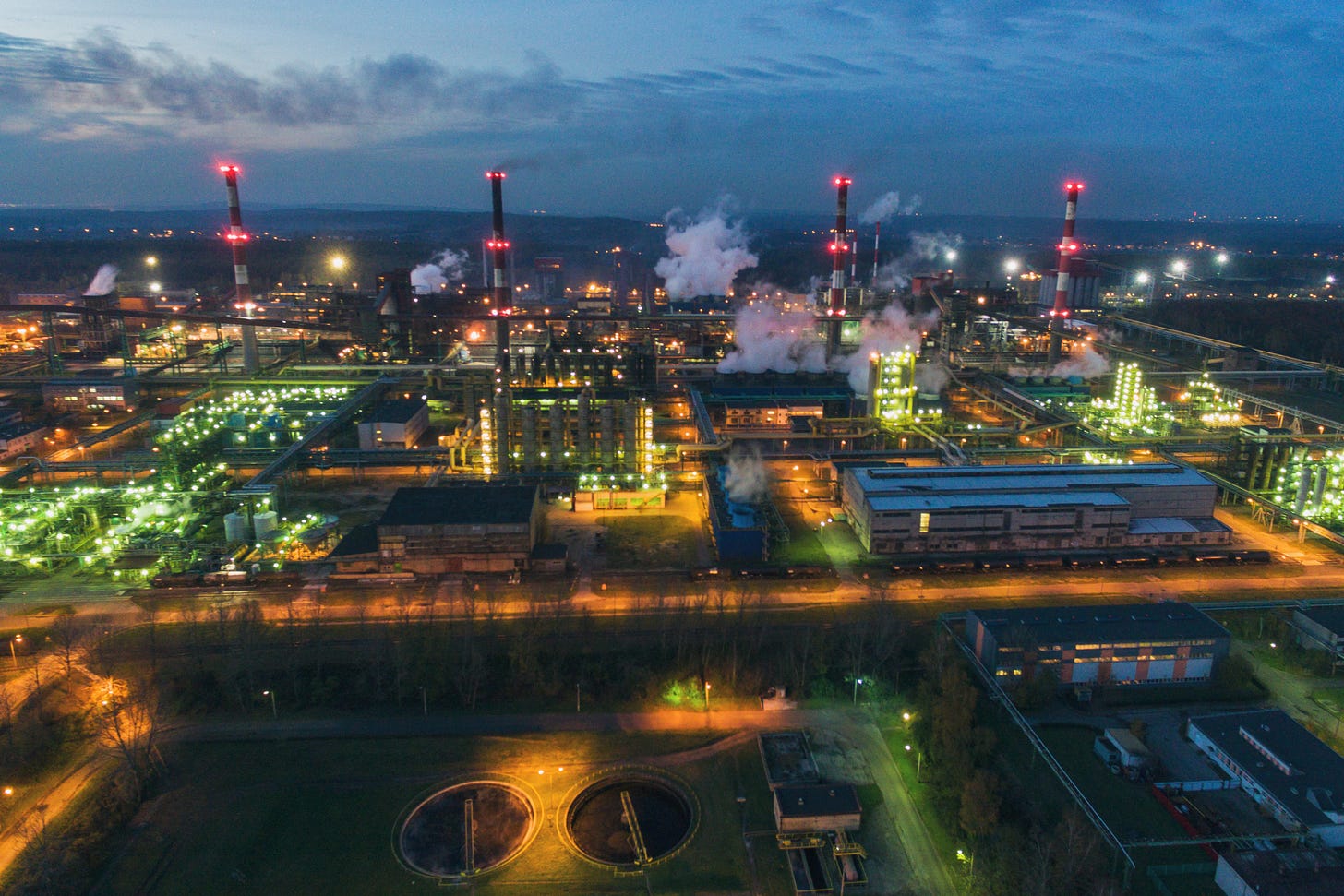Nvidia effect spreading to energy providers as AI theme stalls
Welcome to Callaway Climate Insights, your guide to global climate finance analysis.
Today’s edition of Callaway Climate Insights is free for all our readers. We really want to bring you the best and latest in climate finance from around the world. Please subscribe now.

The lack of investor enthusiasm for Nvidia’s NVDA 0.00%↑ 78% jump in revenue last quarter underscores concerns that the AI boom is losing its magic, and the ripple effect is spreading to shares of energy providers who power the industry.
Shares of both Constellation Energy CEG 0.00%↑ and GE Vernova GEV 0.00%↑ are down more than 10% in the past week, mirroring those of AI leaders Nvidia and Broadcom AVGO 0.00%↑. While nothing Nvidia said about its sales pipeline or even guidance for the coming quarter was alarming, the lack of excitement around it seems worth consideration following two years of a soaring AI market.
The energy provider theme — that huge leaps in AI research and production will require an army of new data centers to power the chips behind it — has vaulted the once-sleepy energy sector to new highs in the past year, with shares of CEG and GEV particularly benefitting as they cut deals with Big Tech to provide the power.
But China’s DeepSeek shocked the market last month when it said it could produce similar advances in AI without the cost, putting a hole in the investment theme that continues to grow, despite solid earnings this week.
The AI story will continue to expand in different ways, but if earnings such as these are starting to bore investors, then a more thorough look at valuations of any stocks tied to the AI theme is likely at hand.
Don’t forget to contact me directly if you have suggestions or ideas at dcallaway@callawayclimateinsights.com.
Follow us . . . .
Twitter | LinkedIn | Facebook | Instagram
Big Oil’s direct air capture plans caught up in Trump spending freeze
. . . . Big Oil’s ambitions for direct air capture (DAC), one of the most-hyped technologies for reducing harmful carbon emissions, are being swept up in the confusion around President Donald Trump’s government personnel cuts and spending freeze, writes Allison Prang from Washington DC. At least three employees working on carbon removal in the Department of Energy’s Office of Fossil Energy and Carbon Management were fired earlier this month as part of the administration’s broad layoffs of probationary staff, according to a person familiar with the matter. Among their responsibilities was helping manage the $3.5 billion government venture fund for DAC hubs around the country, which was part of the 2021 bipartisan infrastructure bill and supported by the oil industry.
Thursday’s subscriber insights
Europe’s NEW new green deal
. . . . The new European Union parliament wasted little time this week moving to secure its green credentials in the face of anti-climate broadsides from President Trump, announcing a €100 billion ($105 billion) Clean Industrial Deal to compete with China and the U.S. to decarbonize heavy industry.
But confusion over what industries will qualify for investment, and in particular how and where that money will come from, looks set to hamper the 10-year strategy before it can even be approved in the coming EU budget.
To begin with, more than half of the money slated to be raised and managed by an Industrial Decarbonization Bank is expected to come from future revenue from nascent carbon markets, and/or voluntary contributions from member states. Students of past intergovernmental, climate cooperation deals know that the gulf between promises of funding and actual deposits is vast.
EU Climate Commissioner Wopke Hoekstra said the strategy behind the program is to decarbonize heavy industry by some 30% over the next decade, a noble goal but one that will depend a lot on economic budgets and also potential tariffs on products such as metals.
Still, the plan is notable in that Brussels recognizes that China is making great inroads in building a clean energy economy and that even in the U.S., the Inflation Reduction Act is benefitting some industries despite the change in government. The real test will come at budget time, which will take place later this year, with early submissions coming this summer.
Editor’s picks: Hot(ter) springs; climate change a threat to coffee
Climate Central analyzed 55 years of temperature data and found that meteorological spring (March to May) has warmed across the U.S. from 1970 to 2024. The group says in its Spring 2025 analysis that the spring season has warmed in 234 (97%) of the 241 U.S. cities analyzed — by 2.4°F on average. Unusually warm spring days now happen more often, Climate Central says. Four out of every five cities now experience at least one more week of warmer-than-normal spring days than in the 1970s. Spring has warmed the most across the southern tier of the country, particularly in the Southwest. Spring warming can prolong seasonal allergies, worsen wildfire risk, and limit snow-fed water supplies, the report notes.
First eggs, now coffee
Despite a rise in coffee prices, coffee farmers are struggling with rising production costs. Crops have been hit hard by bad weather, and labor costs are going up, reports The New York Times. According to the report, the biggest threat is “climate change, which has diminished the supply of coffee around the globe via rising temperatures, droughts and excessive rains — most recently in Brazil and Vietnam, the world’s two largest coffee producers.” Vern Long, chief executive of World Coffee Research, tells the NYT, “The high price is like the flashlight in the dark. ‘Look, folks, we have an issue.’ How do we use this to make sure farmers have stable and sustainable production?”
Latest findings: New research, studies and projects
Commuting in bad weather?
Investigating the impacts of extreme weather on people’s work patterns in the context of work flexibility helps us to better evaluate and adapt to climate change, writes the author of a paper titled Is Working from Home a Way of Adaptation to Climate Change? The paper examines how extreme weather changes people’s work patterns. The empirical analysis is based on data from the American Time Use Survey linked with the Storm Database from NOAA. The results show that job flexibility plays an important role in shaping people's adaptation to extreme weather. Author: Wensu Li, Massachusetts Institute of Technology.
More of the latest research:
Words to live by . . . .
“My message to world leaders is that we should step out of our comfort zone and look at what is seriously affecting humanity: climate change. And those negative impacts are felt most by those of us who live in communities and in the forest.” — Fanny Castro, Coordinating Body of Indigenous Organizations of the Amazon Basin, speaking at Davos.






